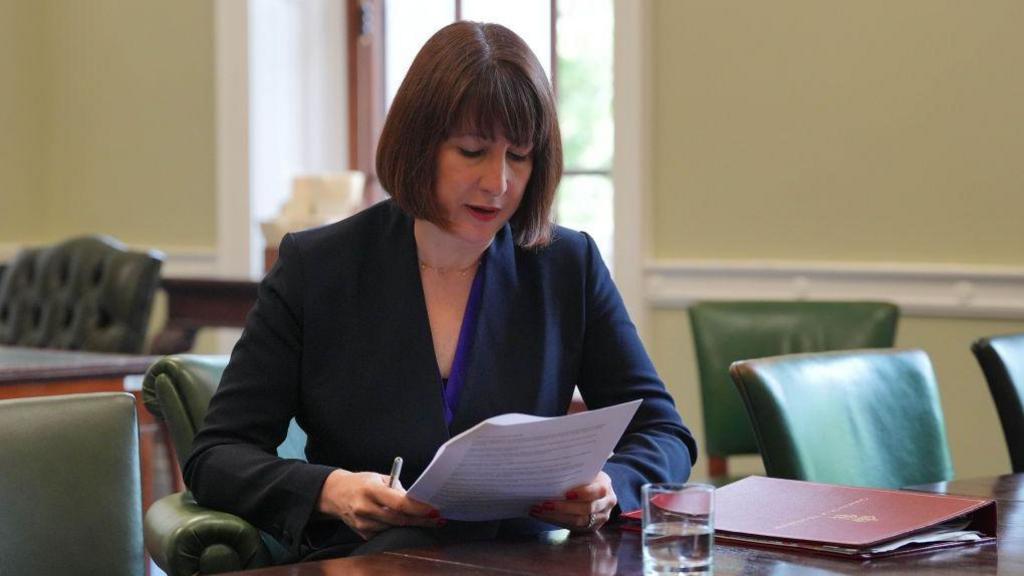Why solid growth complicates the Budget masterplan

- Published
The latest data on the UK economy revealed it grew solidly between April and June, as it did in the previous three months. The figures clearly show a turning point in the spring as the UK continued its recovery from the brief recession at the end of 2023.
The 0.7% growth in the first quarter and the 0.6% that followed are not a boom. But it is a welcome return to more normal growth, after three years of crisis. And at the same time, inflation figures have returned to more normal levels.
In 2024 so far, the UK has grown the fastest of all the G7 advanced economies, even more than the US.
While the picture is different over longer timeframes or if population growth is factored in, it raises reasonable questions about the “grim economic inheritance” claimed by the new government from its predecessor.
The government's main economic mission is to get the highest growth in the G7 by the end of the parliament. But these latest GDP figures show this was already the case on the main measure of the economy as it entered office.
Importantly, during the election, Labour specified its “economic mission” was for the highest growth in consecutive years by the end of the Parliament, focusing on GDP adjusted for population., external
When the strong growth figures were released on Thursday, effective deputy chancellor Darren Jones said: “Growth is our first and most important mission here at the Treasury, but we've got much, much more work to do to recover from the mess that we had been left with”.
He made a further specific claim on what the Conservatives left Labour with, calling the historically high tax burden and national debt “the worst fiscal inheritance since the Second World War”.
However, the latest numbers raise some considerable jeopardy for the government’s budgetary strategy in the coming months.
UK economy continues recovery with 0.6% growth
- Published15 August 2024
In July, Chancellor Rachel Reeves laid out what she called a "fiscal black hole" that would need to be filled by cuts or savings at the Budget in late October, in order to meet her self-imposed borrowing limits.
Forecasts suggest the growth in the economy will have slowed by then. And yet this is the moment when the government could raise taxes further.
The Treasury is also looking for more savings in spending, perhaps in infrastructure, and in some areas of research spending. These are some of the areas normally associated with long-term economic growth.
The Treasury has argued that the heavy lifting on investment will have to be done by the private sector, which in turn will be comforted by political and economic stability, including iron discipline on the public finances.
The constant private narrative from some business leaders and former Downing Street residents is that “stability is not enough”.
By the autumn, if stability alone pays off, the government would expect to demonstrate some high profile moves made by big investors in energy, infrastructure and manufacturing.
At the Budget, the chancellor will announce the numbers for the first year of its spending review for 2025-26 before laying out the rest of the detail next year.
The risk for Reeves is this: having inherited an economy growing at a normal rate, which now is already on track to slow, can she really at that moment justify tax rises or capital spending squeezes this autumn?
While there are clear medium term challenges for the British economy, from low investment and low productivity, Labour clearly inherited an ongoing rebound from last year’s recession. It raises the stakes for the Autumn Budget.